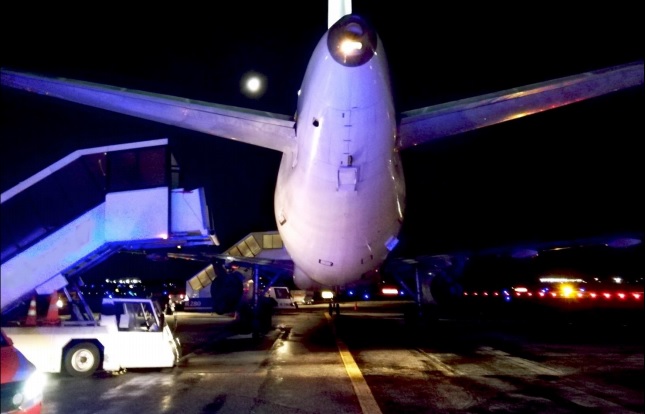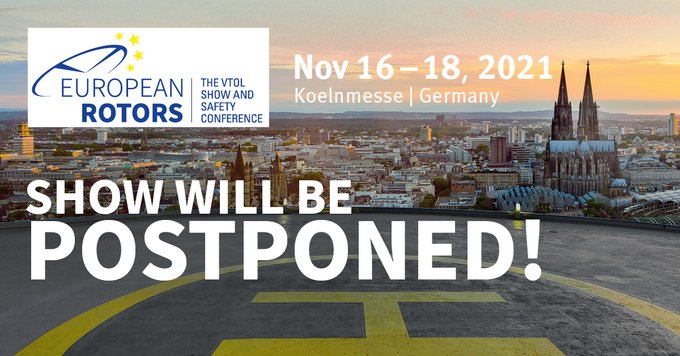An Uncoordinated Fall from an A320 at Helsinki: How Just Reporting is Not Enough
On 13 January 2020 a cabin crew member was injured in a fall from Finnair Airbus A320 OH-LXD on Stand 913 at Helsinki Airport. The Finnish Safety Investigation Authority (SIAF, the Onnettomuustutkintakeskus) explain in their safety investigation report (issued 28 October 2020 in Finnish with an English summary) that the passengers had already exited the A320 via stairs to a bus…
...and the cabin crew member (CCM4) responsible for the left rear door of the aircraft agreed with the driver of the staircase vehicle that the stairs would be driven away. Because another aircraft was taxiing nearby, the bus could not depart for the terminal immediately, and therefore the staircase vehicle at the rear door could not move either.
The senior cabin crew member (SCC) noticed that the bus was not moving and made an announcement to the crew, asking if anyone had given the bus driver the OK sign… The cabin crew member responsible for the rear of the aircraft (CCM2)…hurried to the left rear door of the aircraft, opening it.
Because there was no direct visual contact to the bus driver from the door and the staircase vehicle was still in place, the crew member stepped on the top platform of the staircase vehicle to give the sign.
While the crew member was stepping back into the aircraft, the staircase vehicle started to move away from the aircraft. As a result, the crew member overbalanced and fell a distance of approx. 3.5 m from the door to the apron, suffering severe injuries.
There were no eyewitnesses to the accident, but immediately after, the situation was noticed by the driver of the stairs and the CCM4.
Finnair’s cabin crew have been instructed to call for help in Finland by calling the emergency number 112. As for the flight crew, they have been instructed to contact air traffic control with the aircraft radios. In the accident, SCC notified the cockpit about the fall, from which the captain reported the incident to Finnair’s Hub Control Centre (HCC), which then called 112 [at 07.05.20].
First responders were on scene at 07.11.53. The injured cabin crew member had worked for the airline for c20 years.
During the safety investigation it was established that:
In Finnair’s handbooks and instructions, the duties and areas of responsibility of the cabin crew have been defined in several places. CCM2, who was injured in the accident, believed that she was responsible for giving the OK sign, even though CCM4 had already given the sign to the staircase vehicle driver. In the accident, only CCM4 was aware that the OK sign had been given, meaning that the situational awareness of the crew was not at the same level at the time of the accident.
There are belts that can be, and was in this case were, deployed at the top of the last step before the upper platform and at the bottom. They have microswitches and if open prevent the stairs from being driven off.
The driver of the stairs does not have a direct line of sight to the upper level of the stairwell, and thus cannot know if anyone is on the pltaform. For the driver, closing the airplane door [also] serves as a sign…that it is safe to drive off.
In relation to airport related safety management:
From 2015 to 2020, approximately 50 occurrences related to the operation of an aircraft door, the staircase vehicle or the passenger bridge have taken place in Finland.
Examining this set of safety reports, it was possible to classify these reports into three main categories: crew member deviation, failure of stairs or passenger bridge, and excessive distance between stairs or passenger bridge and airplane.
….there is no coordinated approach between the different actors for the preparation and processing of occurrence reports.
However, the safety risks mentioned in these occurrence reports have not resulted in notable monitoring or other measures by the Finnish Transport and Communications Agency. Neither has Finnair initiated any significant measures with regard to the occurrences concerning them related to the issue.
Professor Veli-Pekka Nurmi, Executive Director of SIAF commented in a press release about the report:
Simply reporting the occurrences does not do any good, if the issues mentioned in the reports are archived at the bottom of the drawer. The aim should be to process the reports in a coordinated manner so that lessons could be learned from the problems and incidents.
SIAF Conclusions
- The display of the OK sign was not communicated to other cabin crew members. Because of this, the crew’s situational awareness was not at the same level.
- The CCOM manual does not clearly define what is included in the responsibilities of a senior cabin crew member at the rear. The duties and responsibilities of cabin crew members are defined in several sources, such as Finnair’s manuals and applications. This can make it difficult to form an unambiguous overall understanding of one’s own roles and responsibilities.
- There is no specific mention in the CCOM manual of how to proceed when the door is reopened after the passengers have left.
- The training of flight crews does not go through the safety equipment of the stairwell. Seeing the seat belt pulled across the stairs is a sign that you can no longer enter the stairwell. Opening the seat belt prevents the stairwell from moving. In addition, stairwells have an emergency stop button on the upper deck that has the same effect.
- Assistance alerting instruction are given to the crew. The cabin crew is instructed in the home country to alert assistance directly from the emergency center when an accident occurs when a crew or cabin member leaves or disembarks an aircraft. There are no corresponding instructions for the flight crew.
- Detailed and direct information flow from the accident site to the emergency center is important. The more detailed information a emergency center attendant receives, the more confident he or she can alert you to assistance at the right level of urgency.
- It is essential for risk analyzes and possible changes to the guidelines that reports of events involving more than one party be made available to all parties.
SIAF Safety Recommendations
SIAF recommends that Finnair:
- harmonise and clarify the definition of duties and areas of responsibility of the cabin crew in the CCOM manual and skyGuest application
- ensure that the cabin crew is trained and instructed to maintain a uniform situational awareness.
- ensure that the instructions and terminology concerning different groups of employees and subcontractors are uniform and that new or changed instructions are implemented at the same time for all groups.
- standardise the instructions of the flight and cabin crew on calling for help in case of an accident occurring to the passengers or crew members of the aircraft while boarding or exiting the aircraft.
- together with its subcontractors, ensure that in accidents or incidents involving the aircraft, its passengers or crew, all parties involved report it to the other parties and process the reports in a coordinated manner.
SIAF recommends that the Finnish Transport and Communications Agency
- redefine the usability of occurrence reports in analysing similar events and further enable the use of this information in monitoring its safety management organisations.
Safety Resources
- Hurried Door Inspection Results in Fall From Aircraft
- Serious Injury During Aircraft Maintenance
- NASA ASRS at 40 and the Continued Challenge of Timeliness for Safety Reporting
- Safety Intelligence & Safety Wisdom
- Safety Performance Listening and Learning – AEROSPACE March 2017
UK CAA CAP642: Airside Safety Management discusses falls and dropped objects in paragraphs 2.97 onwards.
Aerossurance was to have run training workshops at the EHA European Rotors VTOL Show and Safety Conference in Cologne in November 2020 on a) Safety Culture and Leadership and b) Contracting Aviation Services: An Introduction to the Basics. Sadly due to COVID-19 the show has been postponed to 2021.



Recent Comments